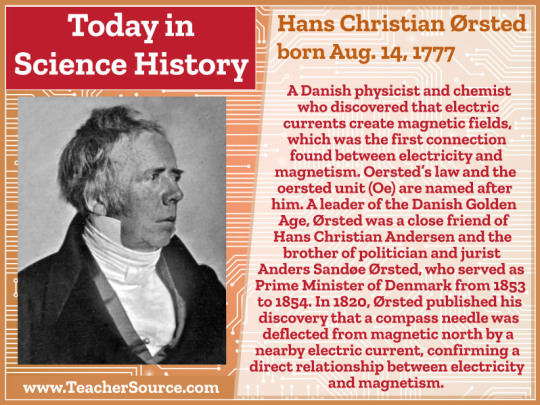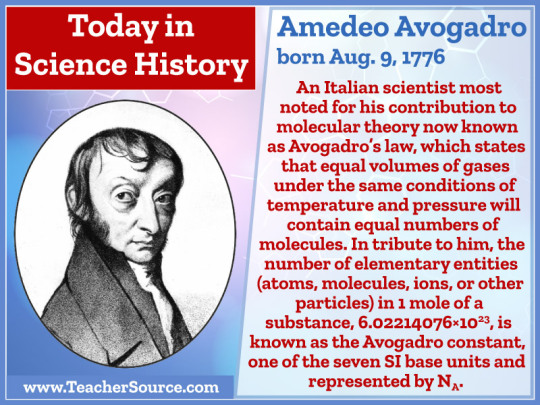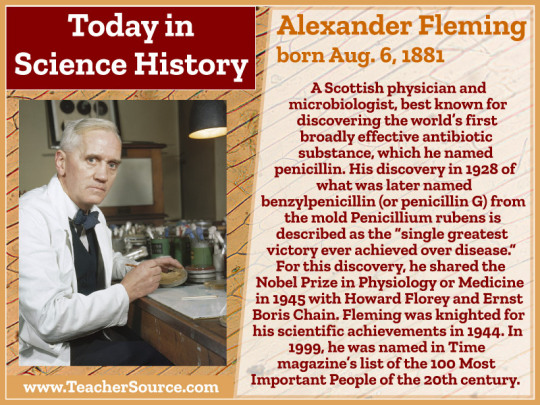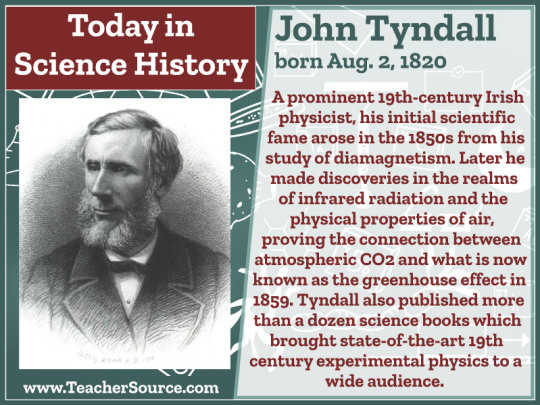Text

Margaret Murie was born on August 18, 1902. A naturalist, writer, adventurer, and conservationist dubbed the "Grandmother of the Conservation Movement" by both the Sierra Club and the Wilderness Society, she helped in the passage of the Wilderness Act, and was instrumental in creating the Arctic National Wildlife Refuge. She was the recipient of the Audubon Medal, the John Muir Award, and the Presidential Medal of Freedom—the highest civilian honor awarded by the United States. She and her husband recruited U.S. Supreme Court Justice William O. Douglas to help persuade President Dwight Eisenhower to set aside 8,000,000 acres (32,000 km2) as the Arctic National Wildlife Range, which was expended and renamed in 1980 by President Jimmy Carter.
#margaret murie#conservation#sierra club#arctic national wildlife refuge#presidential medal of freedom#science#science history#science birthdays#on this day#on this day in science history#women in science#women in history
4 notes
·
View notes
Text

Margaret Hamilton was born on August 17, 1936. An American computer scientist, systems engineer, and business owner. She was director of the Software Engineering Division of the MIT Instrumentation Laboratory, which developed on-board flight software for NASA's Apollo program. She later founded two software companies—Higher Order Software in 1976 and Hamilton Technologies in 1986, both in Cambridge, Massachusetts. Hamilton has published more than 130 papers, proceedings, and reports, about sixty projects, and six major programs. She is one of the people credited with coining the term "software engineering". On November 22, 2016, Hamilton received the Presidential Medal of Freedom from president Barack Obama for her work leading to the development of on-board flight software for NASA's Apollo Moon missions.
#margaret hamilton#software engineering#NASA#computer science#presidential medal of freedom#apollo moon missions#women in history#women in science#science#science history#science birthdays#on this day#on this day in science history
5 notes
·
View notes
Text

Gabriel Lippmann was born on August 16, 1845. A Franco-Luxembourgish physicist and inventor, and Nobel laureate in physics for his method of reproducing colors photographically based on the phenomenon of interference. Lippmann made several other important contributions to various branches of physics over the years, including predicting the converse piezoelectric effect, introducing what he called "integral photography", evolving a method of eliminating the personal equation in measurements of time, and inventing the coelostat, an astronomical tool that compensated for the Earth's rotation and allowed a region of the sky to be photographed without apparent movement.
#gabriel lippmann#physics#inventors#photography#integral photography#science#science history#on this day#science birthdays#on this day in science history
4 notes
·
View notes
Text

Gerty Cori was born on August 15, 1896. An Austro-Hungarian-American biochemist who in 1947 was the third woman to win a Nobel Prize in science, and the first woman to be awarded the Nobel Prize in Physiology or Medicine. With her husband Carl and Argentine physiologist Bernardo Houssay, Gerty Cori received the Nobel Prize in 1947 for the discovery of the mechanism by which glycogen—a derivative of glucose—is broken down in muscle tissue into lactic acid and then resynthesized in the body and stored as a source of energy (known as the Cori cycle). They also identified the important catalyzing compound, the Cori ester.
#gerty cori#medicine#energy#nobel prize#nobel prize winners#women in science#women in history#science#science history#science birthdays#on this day#on this day in science history
22 notes
·
View notes
Text

Hans Christian Ørsted was born on August 14, 1777. A Danish physicist and chemist who discovered that electric currents create magnetic fields, which was the first connection found between electricity and magnetism. Oersted's law and the oersted unit (Oe) are named after him. A leader of the Danish Golden Age, Ørsted was a close friend of Hans Christian Andersen and the brother of politician and jurist Anders Sandøe Ørsted, who served as Prime Minister of Denmark from 1853 to 1854. In 1820, Ørsted published his discovery that a compass needle was deflected from magnetic north by a nearby electric current, confirming a direct relationship between electricity and magnetism.
#hans christian orsted#magnets#electromagnetism#electricity#science#science history#on this day#science birthdays#on this day in science history
1 note
·
View note
Text

Salvador Luria was born on August 13, 1912. An Italian microbiologist, later a naturalized U.S. citizen. He won the Nobel Prize in Physiology or Medicine in 1969, with Max Delbrück and Alfred Hershey, for their discoveries on the replication mechanism and the genetic structure of viruses. Salvador Luria also showed that bacterial resistance to viruses (phages) is genetically inherited. In 1969, he was awarded the Louisa Gross Horwitz Prize from Columbia University together with Max Delbrück. In the U.S. he won the 1974 National Book Award in Science for his popular science book Life: the Unfinished Experiment and received the National Medal of Science in 1991.
#salvador luria#microbiology#medicine#genetics#viruses#nobel prize#nobel prize winners#science#science history#science birthdays#on this day#on this day in science history
0 notes
Text

Vikram Sarabhai was born on August 12, 1919. An Indian physicist and astronomer who initiated space research and helped develop nuclear power in India. He was honored with Padma Bhushan in 1966 and the Padma Vibhushan (posthumously) in 1972. He is internationally regarded as the Father of the Indian Space Program. Known as the cradle of space sciences in India, the Physical Research Laboratory (PRL) was founded in 1947 by Sarabhai. PRL had a modest beginning at his residence, the "RETREAT", with research on cosmic rays and the properties of the upper atmosphere. Research areas were expanded to include theoretical physics and radio physics later with grants from the Atomic Energy Commission.
#vikram sarabhai#physics#astronomy#space#indian space program#physical research laboratory#RETREAT#theoretical physics#science#science history#science birthdays#on this day#on this day in science history
2 notes
·
View notes
Text

Wolfgang Paul was born on August 10, 1913. A German physicist, who co-developed the non-magnetic quadrupole mass filter which laid the foundation for what is now called an ion trap, a combination of electric or magnetic fields used to capture ions - often in a system isolated from an external environment. Ion traps have a number of scientific uses such as mass spectrometry, basic physics research, and controlling quantum states. He shared one-half of the Nobel Prize in Physics in 1989 for this work with Hans Georg Dehmelt; the other half of the Prize in that year was awarded to Norman Foster Ramsey, Jr.
#wolfgang paul#ion traps#physics#nobel prize#nobel prize winners#science#science history#science birthdays#on this day#on this day in science history
3 notes
·
View notes
Text

Amedeo Avogadro was born on August 9, 1776. An Italian scientist, most noted for his contribution to molecular theory now known as Avogadro's law, which states that equal volumes of gases under the same conditions of temperature and pressure will contain equal numbers of molecules. In tribute to him, the number of elementary entities (atoms, molecules, ions or other particles) in one mole of a substance , 6.02214076×10^23, is known as the Avogadro constant, one of the seven SI base units and represented by NsubA.
#avogadro#amedeo avogadro#mole#avogadro's constant#avogadro's number#molecules#science#science history#science birthdays#on this day#on this day in science history
2 notes
·
View notes
Text

Roger Penrose was born on August 8, 1931. A British mathematician, mathematical physicist, philosopher of science and Nobel Laureate in Physics. Penrose has contributed to the mathematical physics of general relativity and cosmology. He has received several prizes and awards, including the 1988 Wolf Prize in Physics, which he shared with Stephen Hawking for the Penrose–Hawking singularity theorems, and one half of the 2020 Nobel Prize in Physics "for the discovery that black hole formation is a robust prediction of the general theory of relativity". He is regarded as one of the greatest living physicists, mathematicians, and scientists, and is particularly noted for the breadth and depth of his work in both natural and formal sciences.
#roger penrose#mathematicians#mathematics#general relativity#cosmology#singularity#nobel prize#nobel prize winners#science#science history#science birthdays#on this day#on this day in science history
18 notes
·
View notes
Text

Alexander Fleming was born on August 6, 1881. A Scottish physician and microbiologist, best known for discovering the world's first broadly effective antibiotic substance, which he named penicillin. His discovery in 1928 of what was later named benzylpenicillin (or penicillin G) from the mold Penicillium rubens is described as the "single greatest victory ever achieved over disease". For this discovery, he shared the Nobel Prize in Physiology or Medicine in 1945 with Howard Florey and Ernst Boris Chain. Fleming was knighted for his scientific achievements in 1944. In 1999, he was named in Time magazine's list of the 100 Most Important People of the 20th century.
#alexander fleming#antibiotics#penicilln#medicine#nobel prize#nobel prize winners#science#science history#science birthdays#on this day#on this day in science history
14 notes
·
View notes
Text

Neil Armstrong was born on August 5, 1930. An American astronaut and aeronautical engineer, he was the first person to walk on the Moon. He was also a naval aviator, test pilot, and university professor. On July 20, 1969, Armstrong and Apollo 11 Lunar Module (LM) pilot Buzz Aldrin became the first people to land on the Moon, and the next day they spent two and a half hours outside the Lunar Module Eagle spacecraft while Michael Collins remained in lunar orbit in the Apollo Command Module Columbia. When Armstrong first stepped onto the lunar surface, he famously said: "That's one small step for [a] man, one giant leap for mankind." It was broadcast live to an estimated 530 million viewers worldwide.
#neil armstrong#the moon#astronauts#nasa#apollo 11#moon landing#science#science history#science birthdays#on this day#on this day in science history
3 notes
·
View notes
Text

John Venn was born on August 4, 1834. An English mathematician, logician and philosopher noted for introducing Venn diagrams, which are used in logic, set theory, probability, statistics, and computer science. In 1866, Venn published The Logic of Chance, a groundbreaking book which espoused the frequency theory of probability, arguing that probability should be determined by how often something is forecast to occur as opposed to "educated" assumptions. Venn then further developed George Boole's theories in the 1881 work Symbolic Logic, where he highlighted what would become known as Venn diagrams.
#john venn#venn diagrams#probability#statistics#science#science history#science birthdays#on this day#on this day in science history
1 note
·
View note
Text

Koichi Tanaka was born on August 3, 1959. A Japanese electrical engineer who shared the Nobel Prize in Chemistry in 2002 for developing a novel method for mass spectrometric analyses of biological macromolecules with John Bennett Fenn andand Kurt Wüthrich (the latter for work in NMR spectroscopy). In February 1985, Tanaka found that by using a mixture of ultra fine metal powder in glycerol as a matrix, an analyte can be ionized without losing its structure, solving a problem in existing mass spectrometry at the time.
#koichi tanaka#chemistry#mass spectrometry#nobel prize#nobel prize winners#science#science history#science birthdays#on this day#on this day in science history
2 notes
·
View notes
Text

John Tyndall was born on August 2, 1820. A prominent 19th-century Irish physicist, his initial scientific fame arose in the 1850s from his study of diamagnetism. Later he made discoveries in the realms of infrared radiation and the physical properties of air, proving the connection between atmospheric CO2 and what is now known as the greenhouse effect in 1859. Tyndall also published more than a dozen science books which brought state-of-the-art 19th century experimental physics to a wide audience.
#john tyndall#physics#co2#greenhouse gases#greenhouse effect#science#science history#science birthdays#on this day#on this day in science history
4 notes
·
View notes
Text

Stephanie Kwolek was born on July 31, 1923. A Polish-American chemist who is known for inventing Kevlar. Her career at the DuPont company spanned more than 40 years. She discovered the first of a family of synthetic fibers of exceptional strength and stiffness: poly-paraphenylene terephthalamide. For her discovery, Kwolek was awarded the DuPont company's Lavoisier Medal for outstanding technical achievement. As of August 2019, she was the only female employee to have received that honor. In 1995 she became the fourth woman to be added to the National Inventors Hall of Fame.
#stephanie kwolek#kevlar#inventors#dupont#science#women in science#women in history#on this day#science history#science birthdays#on this day in science history
2 notes
·
View notes
Text

On July 30, 1971 the first Lunar Roving Vehicle (LRV) was delivered to the surface of the Moon by the crew of Apollo 15. They explored the lunar surface until August 2nd before flying back home, leaving the LRV on the Moon.
#the moon#lunar roving vehicle#lrv#science#science history#on this day#on this day in science history
1 note
·
View note